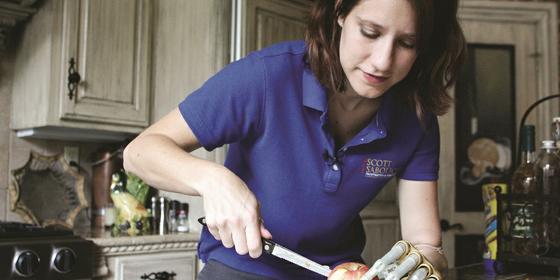Summary: Are cyborgs leaving the fictional world to join the real one? Recently, new models of prosthetics have been designed in order to make patients feel better and actually be able to use their arms and hands. Technology has made possible the improvement of the quality of life of those who suffered a disease that led to amputation, those who lost a limb due to an accident and those who were born with anomalies, by new development of bionic hands. Not only do amputees have to deal with the fact th
Are cyborgs leaving the fictional world to join the real one?
Recently, new models of prosthetics have been designed in order to make patients feel better and actually be able to use their arms and hands. Technology has made possible the improvement of the quality of life of those who suffered a disease that led to amputation, those who lost a limb due to an accident and those who were born with anomalies, by new development of bionic hands. Not only do amputees have to deal with the fact that they have restrictions to perform some actions, but also they are affected psychologically. Hence, the production of prosthetics.
Myoelectric prosthetics
Prosthetics have been around for years, and different materials have been used. The more the prosthetic looks alike to the real human body, the better. It was not until years ago that the myoelectric prosthetics appeared. The myoelectric arm allows the user to perform all the basic tasks that hands and arms are made for.
The prosthetics can be moved as a real arm and it is controlled by the muscles, tendons, and nerves of the upper arm. For those whose tendons and nerves were affected, the movements of the shoulder can provoke the movements of the myoelectric arm. Not only can the amputees move their prosthetic arm but also their hands and fingers; making possible to open and close them.
It is not commonly bought by patients because it is extremely expensive. The payment for the product is around $90,000. The cost is not affordable for average citizens, but the possibility to perform simple actions owing to prosthetics, such as drinking from a bottle of water or high-fiving people, is worth every penny.

3D-printed prosthetics.
Currently, there are companies working on the production of 3D-printed hands. The 3D-printed prosthetic is a low-cost product that accomplishes the same functions as the myoelectric prosthetics. The perks of using a 3D printer are that the costs of the printout are around $300, making it very affordable in comparison to the myoelectric ones.
How does it work? The printed prosthetics have a motor inside it that is connected to three electrodes. The patient should wear these 3 electrodes on his or her upper arm. As a result, when the person squeezes his or her muscles of the upper arm, the electrodes provoke an electrical pulse causing the movement of the hand.
There is a non-profit organization that produces these type of 3D-printed hands and it is seeking to broaden its scope in order to reach more children who were born without fully formed arms. This way, children can improve their quality of life because now they are able to play and enjoy their time without any restrictions. Therefore, prosthetics are a remarkable advance that technology has brought to the Medical Industry.
Modern prosthetics, such as the mentioned above and also the Touch Bionic i-Limb Hand, can bring hope to veterans, to children who were born without fully formed upper limbs, to people who suffered accidents and lost their limbs and to people affected by diseases that led to amputation.